|
A new court ruling allows Animal Protection Voters New Mexico and Española Humane to actively participate in defending Senate Bill 57 throughout the litigation process. Photos by Mattie Allen/Española Humane Three months ago, Animal Protection Voters and Española Humane united to file a motion to intervene in a lawsuit brought by the pet industry challenging Senate Bill 57, a crucial affordable spay/neuter law passed in 2020.
We are thrilled to announce that Honorable Judge Matthew Wilson granted our motion to intervene at a hearing on July 16. Following 30 minutes of oral arguments, Judge Wilson swiftly ruled that APV and Española Humane have legal standing and the right to intervene in Pet Food Institute et al. v. Michelle Lujan Grisham et al. The judge emphasized the case's significant public importance, allowing us to actively participate in defending Senate Bill 57 throughout the litigation process. This milestone empowers us to bolster the state's defense and present our own compelling legal arguments in support of maintaining Senate Bill 57. This important law, on the books now for four years, is poised to allocate vital spay/neuter funds to New Mexico communities urgently in need. Successfully clearing this legal hurdle marks an essential first step in safeguarding New Mexico's affordable spay/neuter law. The lawsuit's outcome will resonate beyond our state, impacting similar legislation nationwide. While the road ahead may be lengthy, we remain committed to expeditiously advocating for a favorable resolution. We will provide updates as the case progresses through the courts. Your continued support is invaluable during this critical time. Join us in championing spay/neuter and protecting animals with a donation. Every contribution makes a meaningful difference.
0 Comments
Co-Curators Dr. Norman Doggett and Dr. Matthew Martinez
Exhibit continues thru October 31, 2024 Bond House Museum Española, NM Over the last twenty-five years the Mesa Prieta Petroglyph Project has worked diligently for the protection and preservation of the cultural landscape of the northern Rio Grande Valley region. There are well over 100,000 petroglyphs that encompass a vast timeline from Archaic periods through Spanish contact and 20th century influences. In addition to ancestral petroglyphs, Mesa Prieta includes numerous archaeological features such as grid gardens and historic trails that are interwoven in the Valley’s histories. This exhibit includes photography by Norman Doggett and other materials that highlight the histories, traditions, and archaeological features of the region. We invite visitors to learn more about the education mission of the Mesa Prieta Petroglyph Project and to further engage with this special place known as Mesa Prieta, Tsikwaye to the Tewa people. Exhibit hours are every Wednesday, Friday and Saturday from 12:00 to 4:00pm. The Bond House Museum also features a permanent exhibit detailing the grand history of the Española Valley area. Admission is free. Donations are welcomed. The Bond House Museum is located at 706 Bond Street, Española NM 87532. For more information: 505-747-8535 or email [email protected] Partial funding was granted by the County of Rio Arriba Lodger’s TaX. By Zach Hively This poem has never been published in the formal sense. Never in a book, a journal, a magazine. But it means something to me, something maybe that stems from the time I first wrote it, or the way I’ve seen people interact with it. And I do see people interact with it, more than any other poem of mine. Because, while it hasn’t been traditionally published, it’s a poem I’ve put into the world a few other ways. It took me a while to realize that poetry could exist in ways outside of books and classrooms and poetry readings. This clicked, or started to, when a dear friend asked me for some work to hang in her art gallery. Words in an art gallery? This meant words had to become visual, somehow. Even tactile. This, I could wrap my head around, because already I prefer working with poems on actual paper—first handwritten, then typewritten. This forces me to consider the poem as an actual thing, not an easy-to-tweak concept on a screen. Edits happen on paper. So do new thoughts. Then, the poem gets typewritten again. Inviting in more tactile elements from this place was pretty inevitable, really. You can snag some poems like this at the Casa Urraca Press stop on the Abiquiú Studio Tour in October.
Maybe this is why the poem hasn’t (yet) appeared in a printed-and-bound book: the rocks, I have to think, would appreciate being presented with flowers and glass. ________________________________________ Here’s the Thing with Rocks They become who they are by wearing themselves away. That is the only way for them to uncover what they’re made of. You can walk right by the rocks that are greeting you. But if you stop, try to notice how they are catching their breath for a time. Erosion is perilous work, and they are right where they are meant to be, until they return to the business of making sand. ________________________________________ Zach’s Substack is free. The free stuff today will remain free tomorrow. Someday, he might offer additional stuff. Zach+, as it were. You can tell Zach that you value his work by pledging a future paid subscription to additional stuff. You won't be charged unless he enables payments, and he’ll give a heads-up beforehand. Pledge your support I’m not going to get into all the ways Australia and New Zealand are different from everywhere else in the world. And Tasmania is part of that too. I want to talk about a specific animal, the Tasmanian Tiger. Read an article about it HERE. While distinct from the Tasmanian Devil, in an important aspect that the Devil is still alive, the last Tasmanian Tiger dies in 1936, in a zoo. The last wild Tasmanian Tiger was shot and killed in 1930. I’d hate to be that guy, sort of like the 14yo kid that shot the last American Passenger Pigeon. Like the woolly Mammoth, there are apparently efforts to bring back the Tasmanian Tiger using DNA and cloning. Did I mention that both the male and female of the species have pouches? The Tiger and Devil are relatives. The Tasmanian Devil still exists today and seems to have an appropriate name. It looks cute, kind of like a baby black bear, except for those teeth. As For Tasmanian Devils, read about them HERE.
The Tasmanian Devils are also a fascinating animal. While extinct on mainland Australia for millennia, they have been re-introduced to save the species from extinction. It seems that the Devils in Tasmania have been ravaged by a cancer that is transmitted through a bite. Yet another weird thing going on down there. If you’re anything like me, you’ll find this strange and useless information interesting. If not, then you can ignore it and move on. By Bryce Dix, KUNM News It’s a beautiful day in the Jemez Mountains. The early summer morning air is crisp – but not cold enough for a jacket – and dead silent. Above, a couple clouds lazily float across the deep blue sky. As our group of 20 or so people clad in waders and hiking gear trudges along a rudimentary path deep in the woods, the ground quickly turns muddy. Soon the path widens, revealing a beautiful meadow lined with walls of tall ponderosa pine. A thin creek divides the land into two. “We’re going to cross the creek and go over to the first set of holes which is, well, either here or there,” said Karen Menetrey from the environmental organization Rio Grande Return. It focuses on restoring damaged ecological systems across the state. The goal today is to plant batches of willows for riparian wildlife – especially, the beaver. The willow is usually seen as a “pest” species, but it plays a vital role in beaver survival, providing food and shelter in the winter. It’s also the construction material for the dams they create. Volunteers place bundles of pre-cut stems into 3-foot-deep holes underneath the water table. They trim any leftover leaves and throw water into the hole. Then, they use long sticks to tamp dirt into and around the hole – mainly to avoid any air bubbles. Menetrey said widespread trapping in the 1860s and 70s in New Mexico nearly decimated the beaver population. Historically, beavers in the U.S. were killed for their fashionable pelts and unique scent glands typically used in perfumes or food flavoring.
“And they are extirpated from some watersheds,” Menetrey said. “Which means they’re not extinct, but they are gone from that particular area.” An estimated 6,000 to 12,000 beavers exist in New Mexico right now, but Menetrey said exact counts don’t exist. Currently, Defenders of Wildlife is working on a beaver “census” of sorts to identify dams using aerial photography. Willow planting for beavers All of this work to reintroduce the beaver back into New Mexico’s streams and rivers is part of a larger push to combat climate change here in the Southwest. “They're really like climate resilience superheroes and super engineers,” said Chris Smith, the brain behind a newly launched venture dubbed the New Mexico Beaver Project. Smith’s vision is to reestablish the widespread benefits beavers and their dams had on New Mexico’s landscapes before commercial trapping, like ecological watershed maintenance. Plus it’s free charge because, well, beavers aren’t motivated by dollar signs. “We have all these vacant waterways, and they could be repopulated by beavers, but we currently don't have a relocation and restoration program,” Smith added. New Mexico does allow the trapping of beavers, but only in certain areas at certain times of the year. Nowadays, tens of thousands of beavers are still snared, trapped, or shot across the country every year. The Department of Game and Fish has tried its hand at some relocation and reintroduction efforts, namely at Bandelier National Monument. In 2014, the New Mexico Senate passed a memorial requesting a beaver restoration plan from the Department of Game and Fish. They never got one. The state does have some guidelines that make it fairly difficult for beaver relocation to happen – namely the five-mile upstream, five-mile downstream protocol, mandating all landowners within that radius give their explicit written consent for beavers to live there . With a recent massive windfall of state revenue from the oil and gas industry, Smith wants some of that money to be set aside specifically for beavers to increase the state’s resilience to climate change. “Beavers, I think, are one of the most cost effective ways to do that,” Smith said. “There's a budgetary reason to do it.” In addition to helping with floods, beaver dams improve water quality, remove pollutants, and, surprisingly, help fight wildfires. Emily Fairfax studies riparian beaver ecohydrology at the University of Minnesota’s Department of Geography, Environment, and Society. “When beavers fight wildfires, that's actually sort of the last step of the number of disasters that they're helping us mitigate,” Fairfax said. Fairfax says some people may see beavers as a “nuisance,” because they may chew on a property owner’s favorite tree, or accidentally flood a field or road. But, she said the pros outweigh the cons. The semi-aquatic rodents are really good at slowing down and storing water in the ground during storms and runoff seasons, she said. That allows water to be available to plants during droughts. “Throughout the whole year, beavers are manipulating the hydrologic cycle in a way that builds up defense to a whole suite of natural disasters, and the wildfire really matters, because that's one that we struggle to manage ourselves,” Fairfax said. These engineering marvels are pivotal to the survival of other species during a wildfire as well. Fairfax said beaver wetlands are too lush and wet to burn – providing a crucial fire break, slowing the blaze down. “A single beaver family can engineer acres and acres and acres of these fireproof patches,” Fairfax said. “They are the safe place in the landscape, and we need more of it.” Fairfax and Smith said the challenge is to overcome societal perceptions that beavers are merely obnoxious, toothy rodents and teach people that the beaver is much more valuable than a perfume ingredient or a fancy hat. By Jessica Rath When Janice and Michael Quinn bought their property in Rio Chama near Medanales, they were quite intrigued by the strange and decidedly unique structure which was part of it: a small building without any straight lines. It looked like something that had grown out of the earth, with undulating curves, bulbous outcrops, round and colorful windows. It had been abandoned for a while and wasn’t in great shape; raccoons and other critters had moved in. Janice and Michael didn’t know much about who built it, but one thing was certain: it was something special that deserved to be restored. The Quinns started on a Sherlock-Holmes-inspired journey. Talking to neighbors and former residents, they managed to piece together the story of the original owner and builder of the Hobbit Hut, a man every bit as eccentric and colorful as the building: Franklin MacFie. An artist, musician, actor, performer, who single-handedly built the free-form house all by himself. Well, people helped him, neighbors and friends. But he designed and planned the dwelling all by himself, although he wasn’t an architect. I figured this would make a fascinating story for the Abiquiú News, and the Quinns kindly agreed to give me a grand tour of the Hut. Michael had been hard at work for weeks and months (“forever”, Janice corrected), sealing the roof which had several water leaks and renovating each room, to make it habitable. But first of all they shared some great news with me: on June 14, 2024, the Cultural Properties Review Committee listed the Franklin MacFie House in the State Register of Cultural Properties and recommended that the nomination be forwarded to the Keeper of the National Register for listing in the National Register of Historic Properties. With the help of New Mexico’s State and National Register Coordinator Steven Moffson, Janice and Michael had filled out a lengthy application to have the Hobbit Hut formally recognized as a site of historic relevance. If you’re interested, here is the link to the nomination; it has a lot more information than I could fit into this article. Why did they apply for this? I wanted to know. “Frankly, it just seemed like a good idea”, Michael told me. “I don't even remember how I discovered that we could apply – just looking around the internet, I guess. What do we hope to get out of it? We hope to get a plaque”, he laughs. “And then maybe some financial and professional help. Because we do everything ourselves. And we pay everything with cash, so it takes a long time. I think my primary goal is to preserve the building, and make sure that it stays a stable, viable building into the future when we’re gone”. One reason why the site is historically relevant may be the fact that it was built with a unique construction technique: Ferrocement. It’s a composite material which uses a skeletal framework of steel rods which is then covered by fine-meshed chicken wire and burlap, and lastly plastered with a layer of cement mortar. Although this is only between 1 3⁄4 and 2 1⁄2 inches thick, it’s an extremely strong shell: Michael claimed that one could drive a car on top of the roof, and it would not cave! Whether that’s indeed possible I have no idea, but a number of Franklin’s friends have been documented dancing happily on the roof. I got a better insight into the way Ferrocement was used when Janice and Michael took me on a tour of the house. The most pressing part of the work to be done is fixing the leaks, Michael explained. “This mesh makes Ferrocement work”, Janice added. “That's why it doesn’t have to be heavy concrete but can be thin. So this whole thing is made out of rebar, chicken wire, burlap, and Portland cement. It’s a wonderful way to build actually, and it's waterproof. They still have ships that the hull is built out of Ferrocement. There are huge stadiums in Europe which are built of Ferrocement. It's amazing, eco-friendly stuff”. Ships? Built with cement? This sounded somewhat counterintuitive (and I have to admit that I’m rather clueless as far as engineering is concerned). But sure enough, there’s even a Wikipedia page about Concrete Ships, click on the link for some interesting images. And here you can find some other amazing buildings made of Ferrocement. From the outside, it looked as if this would be some dark, cavelike abode. But once we stepped inside, I was surprised to see how light-filled and airy the house was! From the entrance, the living areas undulated in every direction, sloping down naturally, following the hillside. There were no straight lines anywhere, and the few dividing walls all had arches and openings. The house looked alive, breathing, moving, changing. I was utterly enchanted. Janice pointed to the ground: “All of this was dirt, which got muddy whenever it rained. Michael worked hard to install concrete floors; that was one of the first things he did”. Next, we looked at the kitchen, and Michael showed me everything that had been done so far, and his many future plans. “The electricity is here for a refrigerator; and there is a sink with a cabinet; and cabinets over there are on the backside of a closet which will be in the bathroom. There will be chairs here and a breakfast table. So, we could rent it out for a couple of months in the Summer; I have plans to put in a mini split system for heating and air conditioning”. “The bathroom will have a shower right here, a toilet there, and the sink, and the washer and dryer will be here, and a water heater”. By this time, after walking through different rooms and getting a better sense for all the amazing details – there were so many windows, for example, and every one was unique and different, some round, some arched, some colored glass church windows – I wanted to learn more about the man who built this. Franklin MacFie. I asked Janice and Michael how they learned about him, and what they learned. Janice told me: “We loved the Hut at first sight, and asked our neighbor Dean Jeffers who lives below the ditch to the south, what he knew about it. From him and another neighbor (Reynel Maestas, the one whose grandmother had owned all these properties), we heard lots of stories. Dean told us that Franklin had moved to Portugal to nurse his partner Jean Michel Belluc who died of AIDS. And that Franklin had died soon after that! That’s why Michael was so surprised to see a very much alive Franklin at our door in 2008!” They had met him! How exciting! I wanted to hear all about it. Michael had quite a story to tell. “We were sitting in the hot tub. And it was the time of year when the moon comes up and projects light out of all the windows and auto tail lights in the Hut. And we were thinking, ‘It's the spirit of Franklin’. The next morning I was home alone, and there was a knock at the door. And there's Franklin with one of his friends from Santa Fe, and the lady from Portugal”. Michael had told me earlier that Franklin had built a round cement and adobe addition to a house in Portugal (he traveled all over the world), and that he had wanted to show his friends from Portugal the house he had built much earlier in New Mexico. So this was that visit. “I opened the door and there's this guy and says ‘Hi, I'm Franklin MacFie’. I couldn’t believe my eyes! ‘Franklin MacFie! The rumors of your demise have been greatly exaggerated!’ was all I could say. He thought that was funny, and he explained that he was here with friends and he wanted to show them the hut. And if it was okay. I said, of course it's okay. Do you mind if I come along? And so we walked down there”. “They weren't here for very long, I don't think they had much time. But that's when the picture of Franklin and me by the window was taken”. “So that was my first connection with Franklin, before I knew anything about him. I didn't know he was sick at the time. I didn't know anything about him, except that he built that place. Which meant a lot to me. Many years later Carol Bondy was here and we talked about the Hut and Franklin. She did some research and found the WordPress website. And that's when we started learning all about Franklin's eccentricities, his life and accomplishments”. He died shortly after this visit. Please take a look at the site if you want to learn more about Franklin MacFie. It’s a memorial put together by some of his lifelong friends, celebrating the artist, film maker, world traveler, theater director (he organized the Espanola Valley Theater where he worked with teen drama students and played in “Bye, Bye Birdie” in Santa Fe in 1978), an altogether gifted and brilliant man who lived in New York City, San Francisco, New Mexico, Morocco, Turkey, Portugal, and lots of other places. I guess it’s more a labor of love and less of an organized historical document, but somehow this is totally fitting for Franklin’s character. Janice told me another funny story, which she and Michael heard from Ray Stevens, a life-long friend of Franklin’s.
“Franklin and his partner Jean Michel, who was French, wanted to make Camembert cheese. And they had a cow. Jean Michel called somebody up in Wisconsin who made cheeses and who also happened to be French. The story goes that they just talked fluidly in French for like 30 minutes on the phone, and Jean Michel got the recipes. And so they started making Camembert cheese. Jean Michel would go to Santa Fe, with his rounds of Camembert cheese and in scantily cut off leather shorts and sell them to restaurants in Santa Fe”. “And Ray told us that sometimes the cheese wouldn't sell and they would bring it back and mix in some herbs and things, reformat and go back to town to try to sell it again, for even more money!” Isn’t it strange to have such a strong connection with another person's life? To gradually learn more details about a unique, creative, and rather eccentric individual? Some people might think that the Franklin MacFie House is too weird and unconventional and not worth saving. I applaud the Quinns for recognizing Franklin’s vision and for putting so much effort into the preservation of the building. They see and understand its beauty. I hope they’ll get some funding so that they can finish this labor of love sooner, rather than later. If you have questions about the Hobbit Hut, or have personal stories to share, please email [email protected]. And thank you so much for showing me around, Janice and Michael – I’m glad I could learn something about Franklin and his original spirit. ‘Loving our changing homelands’ how NM can move toward a respectful future with the environment7/19/2024 New Mexico PBS show explores climate change impacts, policies and people who are trying to resolve a changing globe
Source NM By Laura Paskus No matter where you live, climate change should be on your mind. New Mexico is warming and it is drying. Our forests are changing, and our rivers and aquifers are dwindling, even as we demand more from them all the time. Climate change touches every aspect of all our lives, whether you’re a farmer in the Lower Rio Grande or you own a mountain home and fear losing homeowners insurance. Fire season is longer and frankly, terrifying — especially when accompanied by post-fire flooding. Warming affects public health, whether fueling the pernicious spread of Valley Fever or making people who take certain medications more vulnerable to heat-related illnesses. And the more-than-human species we share this state with are suffering, too. So, yes, if you’re paying attention to climate change, you’re probably feeling some existential dread. Our new show, “Loving Our Changing Homelands,” highlights some of those challenges. But, I’m not asking you to lie in bed at night and worry. Nor do I want you to give in to despair or apathy. In fact, when it comes to climate change, habitat loss, and environmental challenges, there remains good work to do on every scale, from your yard to the planet. Policy changes and politics are important, for example, and it’s critical to elect officials who acknowledge — and understand — human-caused climate change, and then to hold them accountable every day they are in office. Greenhouse gas emissions must be reduced and where possible, eliminated, across industries. Certainly, new technologies can help us be more water- and energy-efficient. And there are easy ways for us each to make do with less. Less water, less electricity, less demand for consumer goods strewn about in our throw-away culture. But most of all, living in a climate changed world means that we need to remember, or decide upon, what we value, and what we love. We can all love this place, New Mexico, that is our home, whether we’ve lived here since time immemorial, for eight generations, or just moved here recently. In loving our changing homelands, we can exhibit respect and reciprocity. And, we can come together in community, in all of our diverse ways, to adapt to a warming world. Years ago, the writer Barry Lopez was in Albuquerque on a book tour. As a journalist, as a mother, and as a New Mexican, I always think of something he said. He said that it is okay to be in love with the world and to articulate that. And so, at Our Land, with this special, we articulate our love of the world. A world that I know we can adapt to, equitably, sustainably, and joyfully. Please join me in the coming days as I share with you some of what I’ve learned from our guests on this special show, including hydrologist Phoebe Suina from the Pueblo of Cochiti; Paula Garcia, executive director of the New Mexico Acequia Association; Theresa Pasqual, director of the Tribal Historic Preservation Office at the Pueblo of Acoma; Sister Joan Brown, executive director of New Mexico & El Paso Interfaith Power and Light; and Aaron Lowden, Indigenous Seed Keepers Network Program Coordinator and a farmer at the Pueblo of Acoma. A longtime reporter, Laura Paskus is senior producer for “Our Land: New Mexico’s Environmental Past, Present, and Future” on NMPBS. Learn more and watch at: newmexicopbs.org/productions/newmexicoinfocus/our-land/ and youtube.com/c/OurLandNM/videos Contemporary Mexican Photography Lecture Sunday, August 4, 5:00 – 6:00 p.m. The Abiquiú Inn proudly hosts a compelling lecture by Mexican photographer Cristina Kahlo. Cristina, the great-niece of Frida Kahlo, is one of Mexico’s most prominent contemporary photographers. Cristina’s artistic career follows in the footsteps of her great-grandfather Guillermo Kahlo and father Antonio Kahlo, both celebrated photographers.
Cristina will guide us into various themes treated by Mexican photographers in recent decades, from the magical to the political, and from documentaries to the surreal. She will also discuss her family lineage and special family memories in this lecture. Cristina employs multiple photographic printing techniques in her work, including platinum, cyanotype, heliogravure and color interventions. Her subjects include the feminine universe, geometry, rituals, music, architecture, dance, and childhood disabilities. Cristina’s most recent work was photographing and cataloging the Frida Kahlo Museum collection for its 65th anniversary. Cristina also recently curated the groundbreaking exhibition “Kahlo: An Expanded Body” at the Parrish Art Museum (New York), focusing on Frida’s dramatic medical history and its profound impact on her art. Her photography has been exhibited in numerous European galleries as well as throughout Latin America and the United States. Seating for this event is limited, so plan to arrive early. For more information, contact: Carlos Rovelo at 214-505-6549. By Trip Jennings, New Mexico IN Depth
This story was originally published by New Mexico In Depth It’s on. Gov. Michelle Lujan Grisham called New Mexico legislative leaders’ bluff, signing a proclamation Wednesday afternoon to demand state lawmakers return to Santa Fe for a mid-year special legislative session scheduled to begin noon Thursday. Lujan Grisham signed the proclamation during a state capitol press conference in Santa Fe surrounded by a phalanx of public officials that included Albuquerque Mayor Tim Keller, leaders from Farmington, Las Cruces and other communities, and three Pueblo governors. The officials showed up en masse to support the governor in her call for state lawmakers to tackle several public safety measures she says cannot wait until January, when lawmakers are scheduled to regularly return to Santa Fe. Her chances of success are anybody’s guess, especially during an election year when lawmakers would prefer to be home, particularly those running for re-election. When they’re in session, lawmakers cannot solicit campaign contributions, although they can accept them. State House and Senate leaders have told Lujan Grisham that their fellow lawmakers haven’t reached a consensus on her legislative priorities. Governors have the power to call special sessions, but doing so without an agreement forged with leaders during negotiations prior to the session is risky — and rare. Reaction was swift Wednesday afternoon from progressive organizations who have publicly expressed their concern about the governor’s agenda. In an email, Bold Futures, Equality New Mexico, the ACLU of New Mexico, and the New Mexico Coalition to End Homelessness denounced her decision to move ahead while ignoring community members and experts who said the governor’s measures will harm vulnerable populations. Special sessions are usually short and narrow in scope. Fourteen of the 25 special legislative sessions held since 1990 have lasted six days or fewer. And of the seven that lasted 10 days or more, four of them involved lawmakers’ once-a-decade responsibility of redrawing lines for legislative and congressional districts, which generally take much longer than other special sessions. Without an agreement in place, this week’s special session could drag on for days. Or state lawmakers could gavel themselves out of session. A simple majority of lawmakers in each chamber could vote to do that. Or one chamber could work while the other is adjourned, which happened when Gov. Bill Richardson was in office and the Senate adjourned while the House stayed in special session. As was the case with the state Senate that year, the adjourned chamber must come back every three days to gavel itself back into session and then adjourn — unless the other chamber says it is OK to be out for longer than three days. Sundays do not count toward the three days. Here is the governor’s agenda according to the proclamation sent out by her office Wednesday afternoon: (1) amending certain procedures and requirements relating to criminal competency laws (2) amending the definitions of “harm to self” and “harm to others” in the Mental Health and Developmental Disabilities Code and the Assisted Outpatient Treatment Act (3) requiring local law enforcement agencies to submit reports on crime incidents, ballistics information, and other relevant information to the Department of Public Safety on a monthly basis (4) enacting the Unsafe Use of Public Highways and Medians Act to ensure safe use of medians and roadways by pedestrians (5) increasing the penalties for felons and serious violent felons found in possession of a firearm (6) amending the Racketeering Act to add various predicate offenses, expand the definition of “enterprise,” and add various crimes relating to racketeering activity (7) increasing the basic sentence for crimes involving the possession or trafficking of fentanyl (8) appropriating funds to Federal Emergency Management Agency (FEMA) Public Assistance eligible applicants that have been approved for FEMA public assistance funding for projects to replace or repair public infrastructure damaged by fire, flooding, or debris flows that were addressed as part of Major Disaster Declaration DR-4795-NM (9) and appropriating funds for the expenses of the Fifty-Sixth Legislature, First Special Session, 2024. OFFICE OF THE STATE ENGINEER, INTERSTATE STREAM COMMISSION, BUREAU OF RECLAMATION AND USACE-ALBUQUERQUE DISTRICT PUBLIC AFFAIRS Water Managers continue to respond to sediment plug on Rio Chama: State and Federal partners coordinating to ensure safety and access to water
SANTA FE, N.M. –The Office of the State Engineer and the Interstate Stream Commission, along with the U.S. Army Corps of Engineers (USACE) and the Bureau of Reclamation, continue to work closely together to manage Rio Grande water operations and establish a channel for the river after a sediment plug formed in the Rio Chama following an intense rainfall on June 20. USACE is conducting flood control operations by managing releases from Abiquiu Reservoir within their authorities to minimize effects. To ensure that water rights holders receive the available water and to maintain compliance with the Rio Grande Compact, the OSE/ISC has provided Reclamation with state funding to mobilize crews and specialized equipment to clear a channel through the sediment plug, which was approximately 100-feet wide, 4 to 5 feet deep, and over a mile long. Until channel capacity in the Rio Chama can be restored to safely release higher flows from Abiquiu Reservoir, flows on the Rio Chama will be restricted and San Juan-Chama Project water may not be released from Abiquiu Reservoir. This is resulting in lower flows through the Middle Rio Grande. The state and federal agencies will continue to monitor and respond to the situation and work throughout the Rio Grande Basin to ensure that New Mexicans remain safe and have access to their designated water allocations. --- The Office of the State Engineer is charged with administering the state’s water resources. The State Engineer has power over the supervision, measurement, appropriation, and distribution of all surface and groundwater in New Mexico, including streams and rivers that cross state boundaries. The State Engineer is also Secretary of the Interstate Stream Commission. The nine-member Interstate Stream Commission is charged with separate duties including protecting New Mexico’s right to water under eight interstate stream compacts, ensuring the state complies with each of those compacts as well as investigating, conserving and protecting the waters of the State, in addition to water planning. https://www.ose.state.nm.us |
Submit your ideas for local feature articles
Profiles Gardening Recipes Observations Birding Essays Hiking AuthorsYou! Archives
September 2025
Categories
All
|




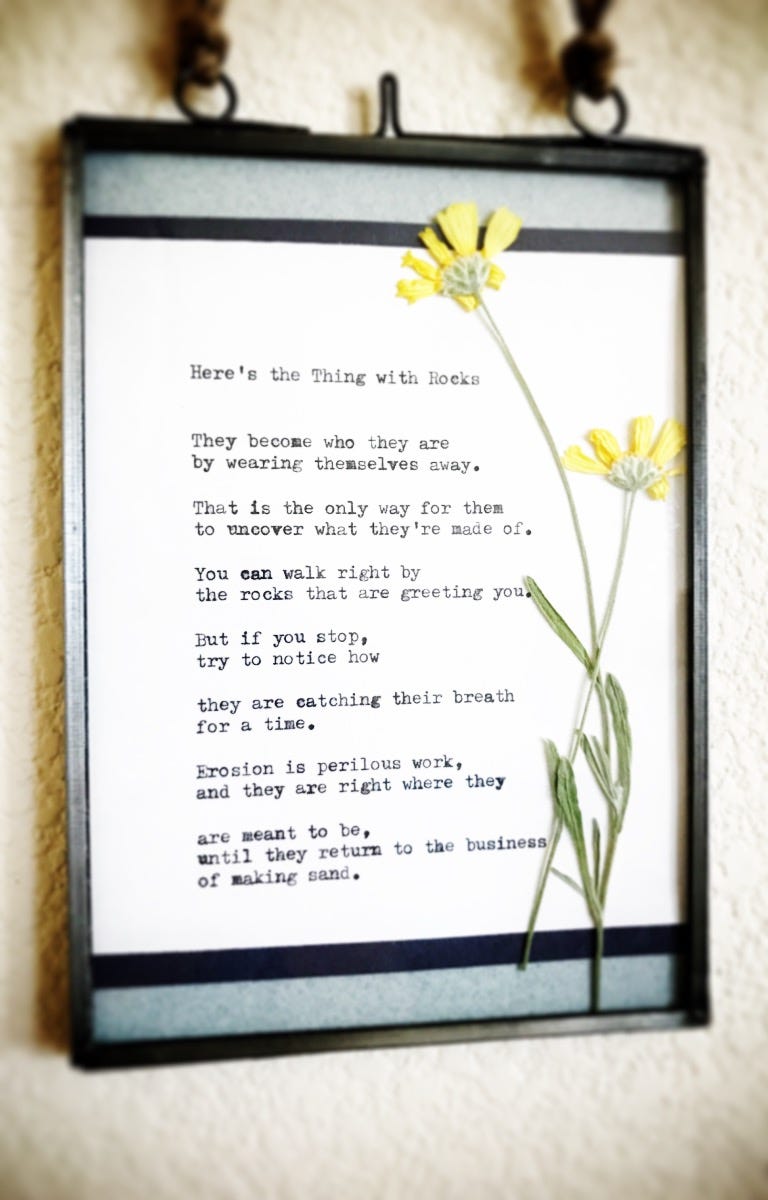

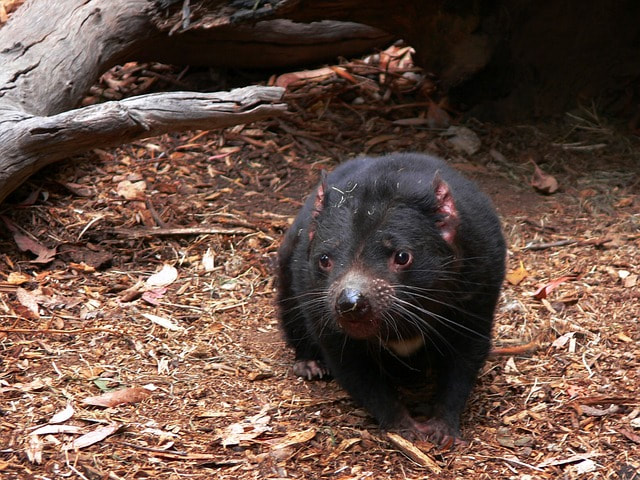

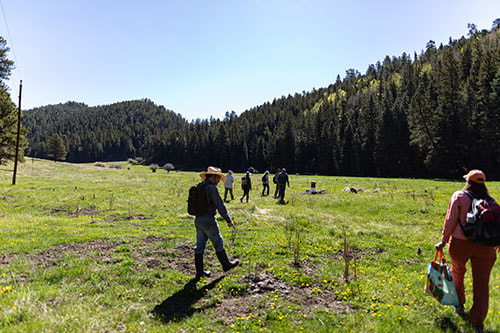

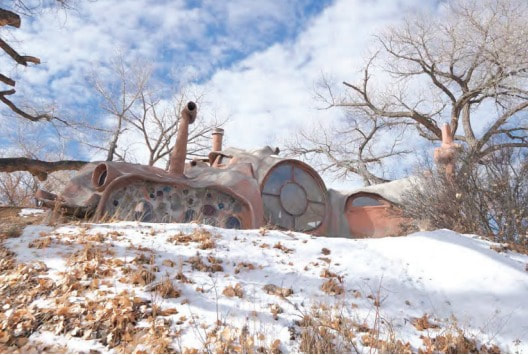
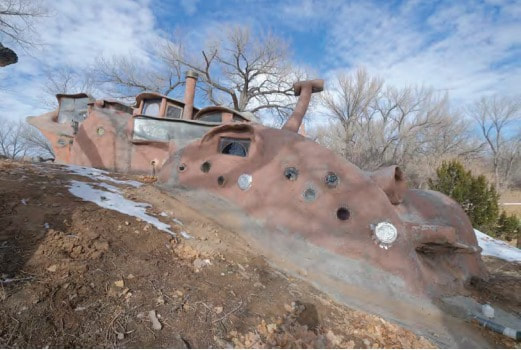
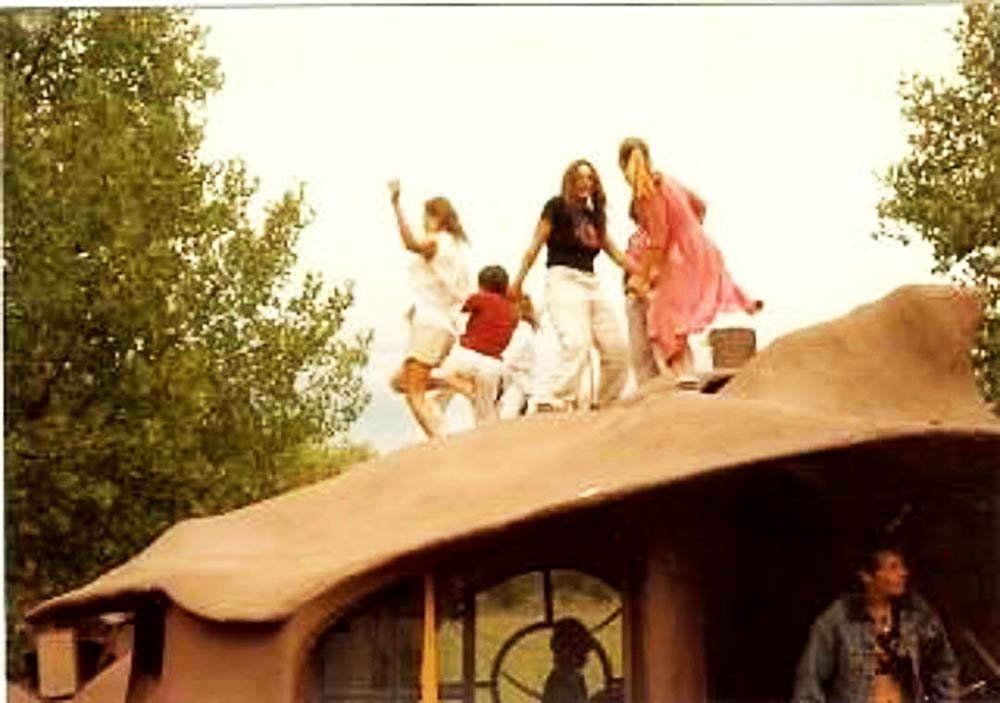
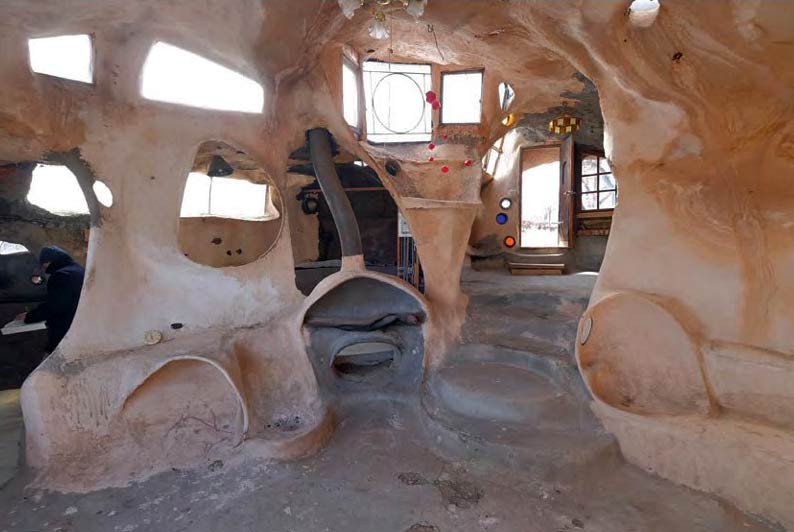

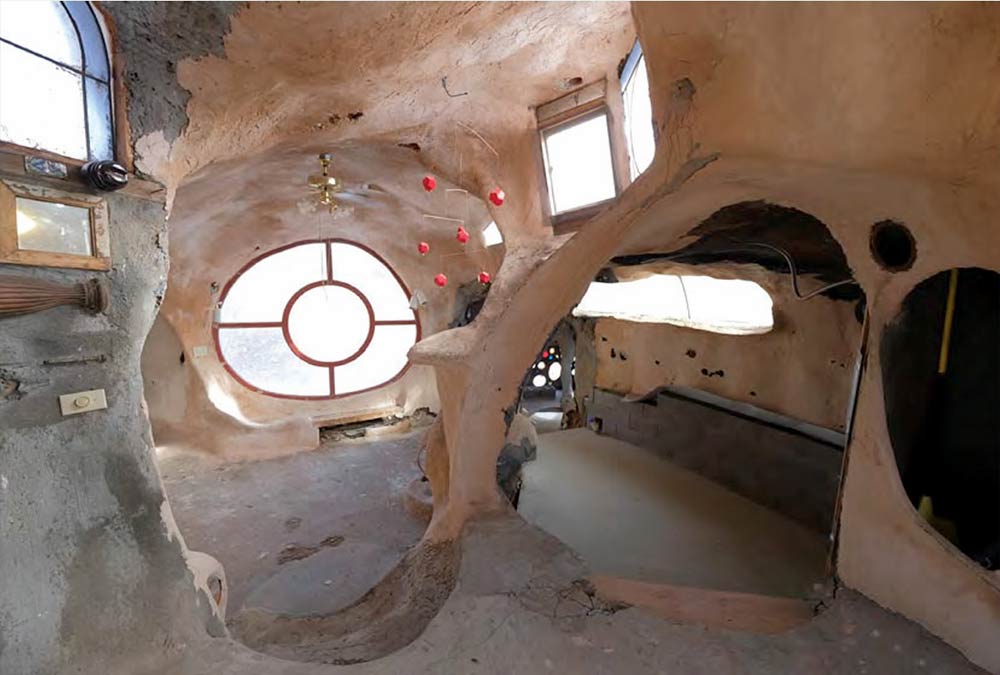
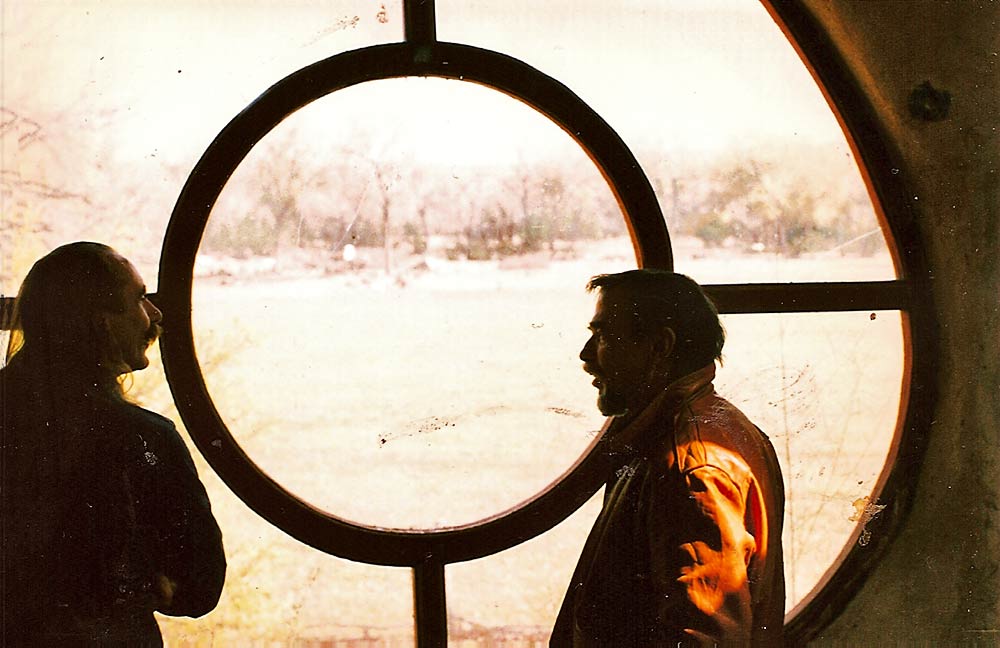
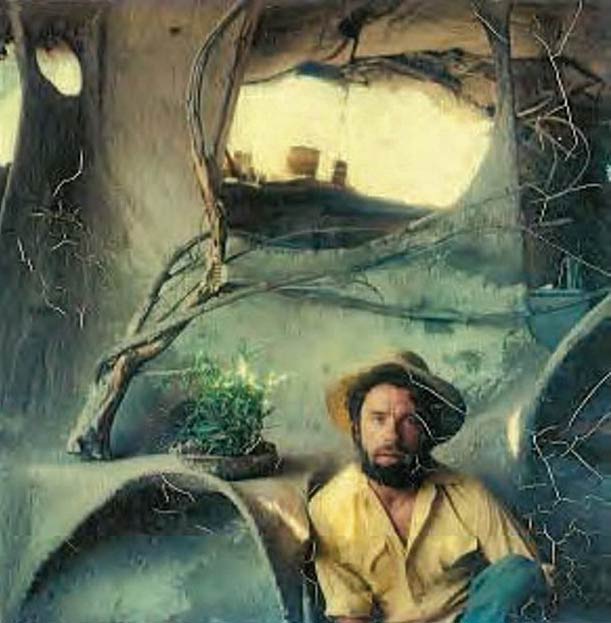
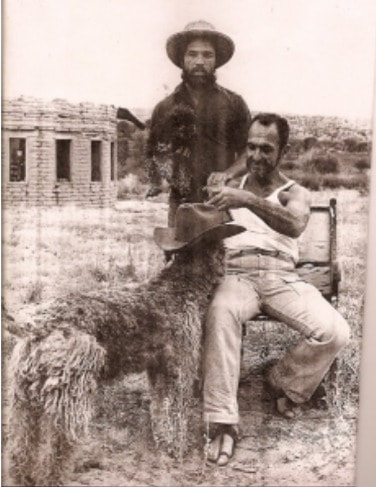
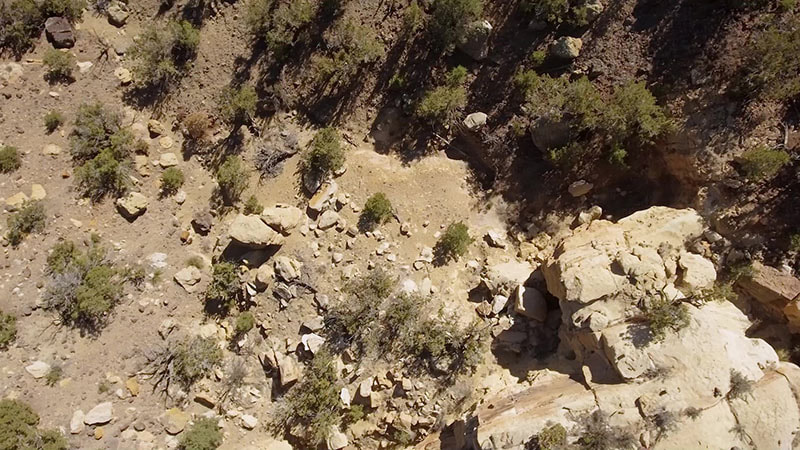

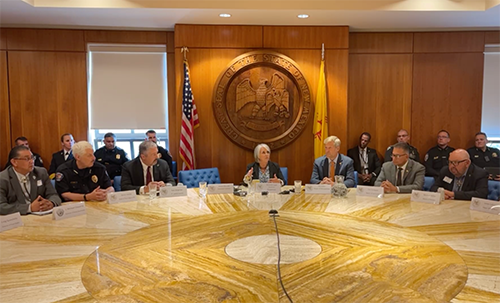

 RSS Feed
RSS Feed